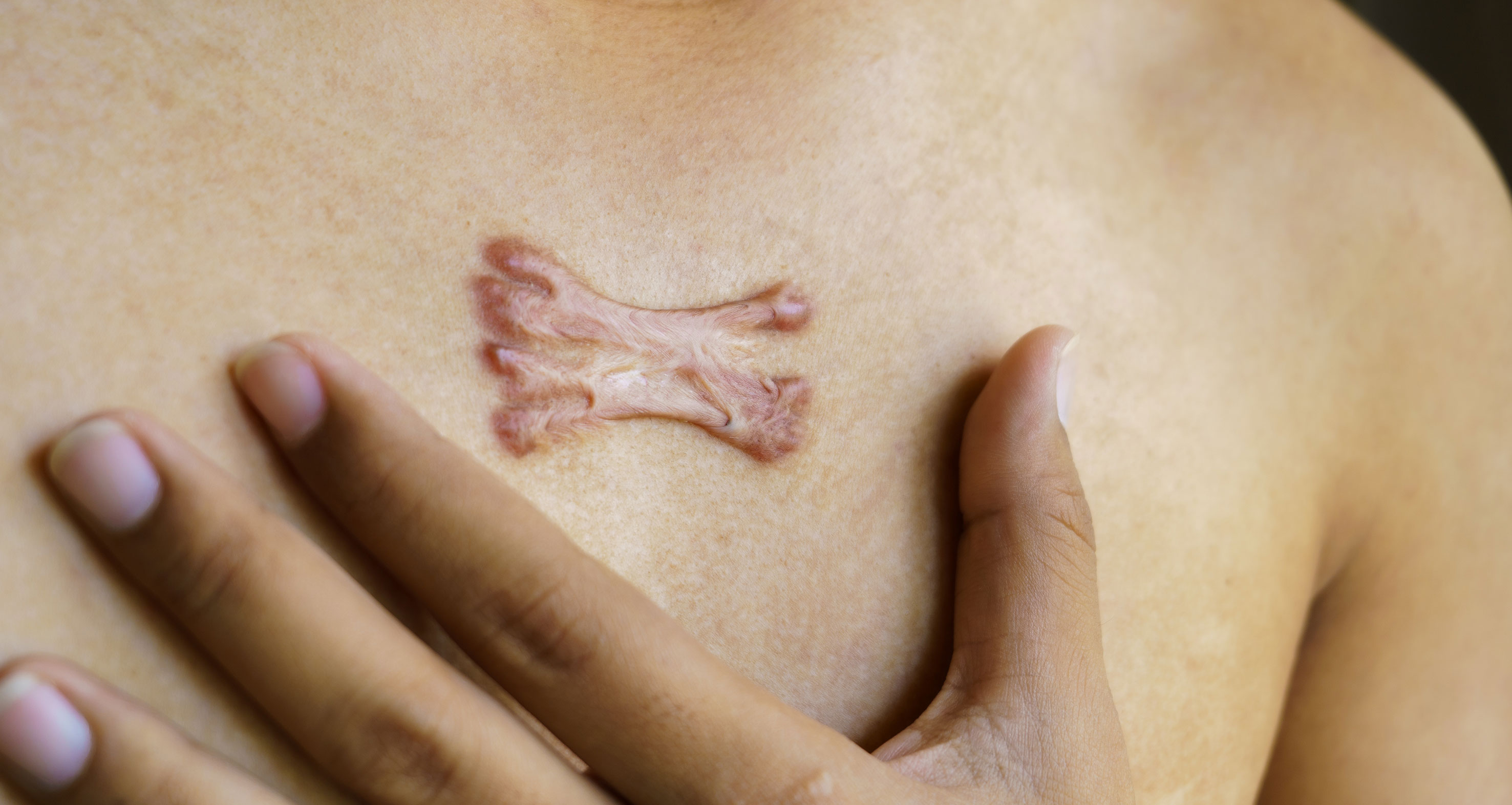Often known by the shortened term 'keloids', keloid scars occur after between 5% and 15% of wounds. The defining feature of keloids is that the scar overgrows and eventually becomes larger than the wound they were caused by. This edition of the Jobskin® blog examines some of the facts about keloids and showcases some of our products that can help in their management.

The word 'keloid' comes from 'chéloïde', a term coined more than two hundred years ago. In turn, 'chéloïde' is derived from the Greek word 'chele', which means 'crab's claw'; this refers to the manner in which keloid scars develop in a sideward motion into the skin.
After any wound, the skin heals itself and forms scar tissue. Both the colour and texture of scar tissue may remain different from healthy skin surrounding it but the scar usually flattens and fades after time and treatment; this type of scar is a 'hypertrophic' scar. Keloids differ from hypertrophic scars in three main aspects:
- Keloids can develop after relatively minor damage to the skin, for example the damage caused by acne. They sometimes develop spontaneously where there has been no trauma to the skin at all
- Keloid scars grow or spread, often far beyond the damaged area of skin
- Keloids are sometimes permanent
As yet, the cause of keloids is not fully understood, though they appear to be related due to the body over-producing collagen. They can affect all genders, ages and races, though are more commonly found in certain ethnic groups such as people with African, Asian and Hispanic backgrounds.
Though keloid scars are not usually hereditary, studies published by the British Association of Dermatologists suggest that up to 10% of Europeans affected by keloids have what is termed a 'positive family history'. A number of risk factors have been identified including:
- Keloids are most likely to develop following injuries from burns, scars from acne, wounds that have been infected or where the skin has been significantly tightened during the process of healing
- The most common locations for keloids are the upper chest, the sternum, the shoulders, the chin, the neck and the lower limbs. Keloids can also affect the ears after they have been pierced
- Keloids most commonly occur in people between puberty and 30 years of age and are more likely to affect people who have previously had a keloid scar
- Keloid scars sometimes appear or increase in size while a woman is pregnant
There is no cure yet available for keloid scars but there are several different methods of treatment available. These include laser therapy, cryotherapy, compressionsuch as Jobskin's Classic™ and Premium™ pressure garments for burns and scar management, steroids and, in severe cases, surgery.
Another treatment option is the application of silicone gels and dressings, both of which have been shown to make the colour of the keloid paler and also reduce its thickness. Jobskin® offer both of these treatment options.
ScarFX®
Available in a comprehensive selection of pre-cut shapes and sizes, ScarFX® silicone sheet is extremely versatile, washable and exceptionally easy to apply. Flexible and comfortable, the self-adhesive shapes deliver excellent performance and are made using 100% pure silicone to offer the best skin tolerance.
ScarSil® Topical Gel
.png)
Just as effective as silicone sheeting, ScarSil® topical gel is ideal for more awkward scars, such as those on the moving parts of the body. The fact that it is invisible once applied also makes the formula perfect for use on facial scars.
For information and support relating to scars, please visit the website of The Scar Free Foundation, a UK charity, at https://www.scarfree.org.uk/
If you'd like to find out more about ScarFX® and ScarSil®, please browse the Jobskin® website and do not hesitate to get in touch with our dedicated customer service team for further advice.